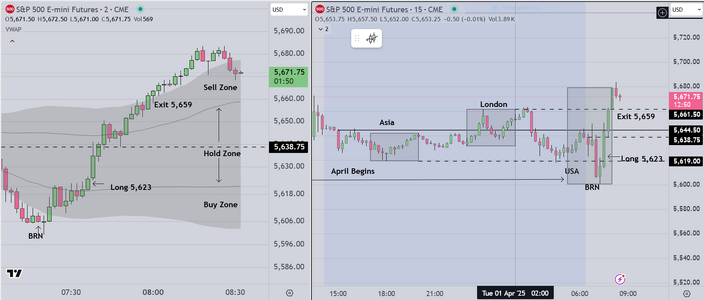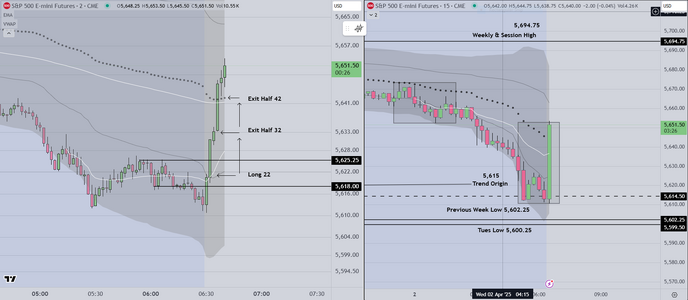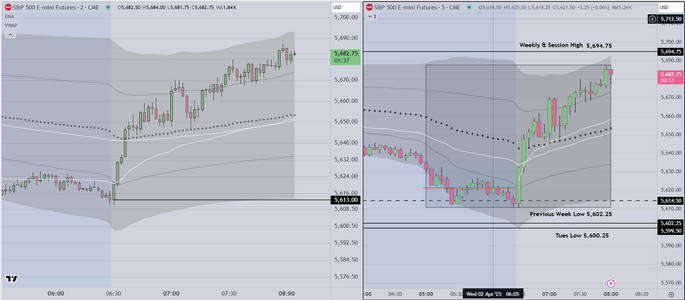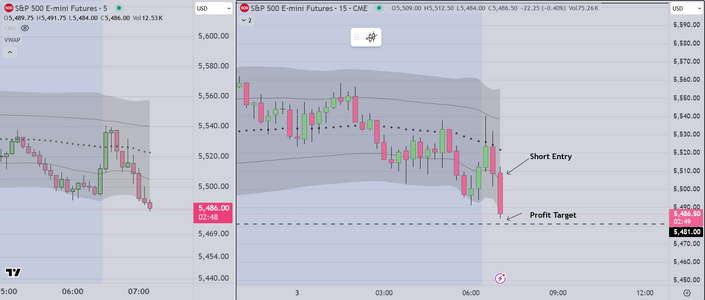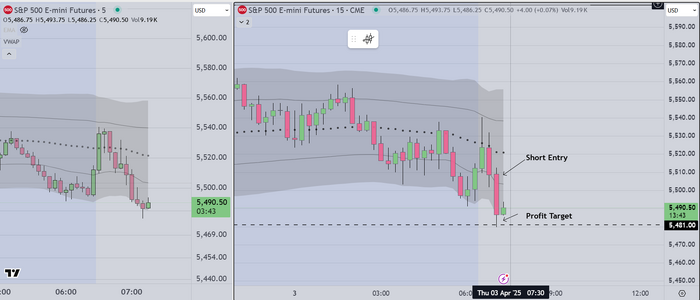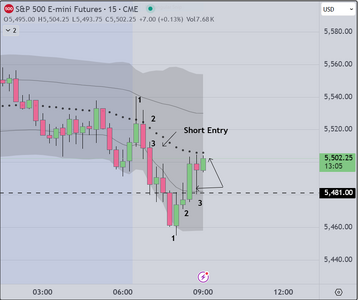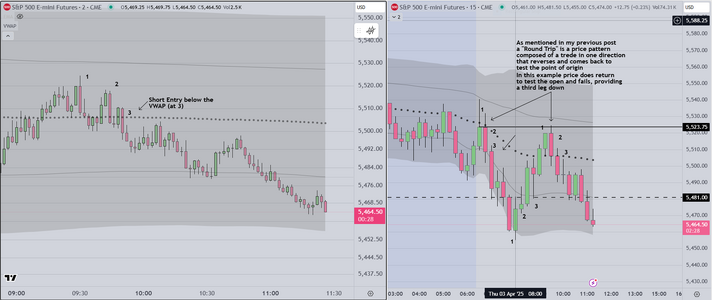I am done for the day and wanted to publish
this version of the Simple Retail Chart, that I
will be using in my next class
On the left, two (2) minute candles against a
stripped down VWAP Envelope (I have removed
the VWAP median). On this chart one can see the
Buy & Sell Zones, located between the 1st & 2nd
Standard Deviation Lines. Basic parametric statistics
tells us that most (about 2/3rds of prices will fall inside
these lines, AND when price action is "Trading Range"
it will tend to move from the outer bands to the midpoint
and when price trends it will often move from the one side
to the other.
On the right side, the "Big Picture" showing the "Timing Windows"
representing Asia, London and US Sessions. Each is three (3) hours long
and within each window is almost always a trading opportunity. We
suggest students trade within these windows to maximize opportunity
and minimize losses while they learn. Finally the relative position of
the Windows can be used to determine whether the market is trending
or in a trading range (just extend lines from the high/low).
We spend a lot of time showing traders the basic tools of the trade
including 1) VWAP, 2) Volume Profile, and 3) Statistical Skew.
What these three tools have in common is, they are all based on
volume. We have also used "Order Flow" in past and it works IF one wants
to put in the time, however the influence of HFT (high frequency trading)
has made it very difficult for retail traders to learn that style of trade. This
in our experience is much more accessible for amateurs.
Good luck
this version of the Simple Retail Chart, that I
will be using in my next class
On the left, two (2) minute candles against a
stripped down VWAP Envelope (I have removed
the VWAP median). On this chart one can see the
Buy & Sell Zones, located between the 1st & 2nd
Standard Deviation Lines. Basic parametric statistics
tells us that most (about 2/3rds of prices will fall inside
these lines, AND when price action is "Trading Range"
it will tend to move from the outer bands to the midpoint
and when price trends it will often move from the one side
to the other.
On the right side, the "Big Picture" showing the "Timing Windows"
representing Asia, London and US Sessions. Each is three (3) hours long
and within each window is almost always a trading opportunity. We
suggest students trade within these windows to maximize opportunity
and minimize losses while they learn. Finally the relative position of
the Windows can be used to determine whether the market is trending
or in a trading range (just extend lines from the high/low).
We spend a lot of time showing traders the basic tools of the trade
including 1) VWAP, 2) Volume Profile, and 3) Statistical Skew.
What these three tools have in common is, they are all based on
volume. We have also used "Order Flow" in past and it works IF one wants
to put in the time, however the influence of HFT (high frequency trading)
has made it very difficult for retail traders to learn that style of trade. This
in our experience is much more accessible for amateurs.
Good luck
Attachments
Last edited:

